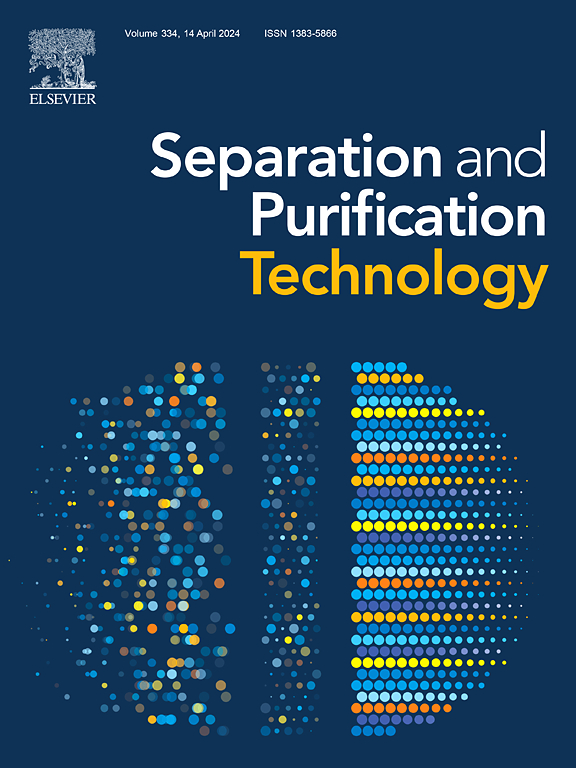Enhanced pressurized electro-osmotic dewatering technology for slurry
IF 8.1
1区 工程技术
Q1 ENGINEERING, CHEMICAL
引用次数: 0
Abstract
Efficient slurry dewatering is critical in numerous engineering and environmental applications. Traditional electro-osmosis methods often struggle with uneven electrical field distribution and electrode corrosion, limiting their performance. To address these challenges, this study presents an enhanced pressurized electro-osmotic dewatering (EPEOD) technology featuring a three-electrode array configuration and a fabric electrode (FE) material. This configuration offers bi-directional water migration, superior corrosion resistance, and uniform electric current distribution, enhancing dewatering efficiency significantly. Experiments were conducted using slurry samples of bentonite and kaolin in varying proportions to assess the variation in dewatering performance and soil properties. The findings demonstrated that the proposed technique significantly improved water removal, reducing the initial moisture content from 325 % to a final moisture content of 94.3 % for a 100 % bentonite sample. This performance was notably better than that of other methods, such as mechanical dewatering (MD), electro-osmotic dewatering (EOD), and pressurized electro-osmotic dewatering (PEOD) with electrode reversal (ER) technique with a final water content of 130.4 %. The electrode array configuration and the fabric electrode minimize corrosion and reduce electrical potential loss at the electrode-soil interface. Ion concentration profiles indicated that Ca2+ ions are primarily responsible for the transportation of pore water toward the cathode. The EPEOD process was shown to alter soil properties, including reductions in liquid limits (LL) and plasticity indices (PI). Overall, this study highlights the effectiveness of the proposed novel EPEOD technique in enhancing slurry dewatering performance by implementing a three-electrode array configuration and a fabric electrode material.


用于泥浆的强化加压电渗脱水技术
本文章由计算机程序翻译,如有差异,请以英文原文为准。
求助全文
约1分钟内获得全文
求助全文
来源期刊

Separation and Purification Technology
工程技术-工程:化工
CiteScore
14.00
自引率
12.80%
发文量
2347
审稿时长
43 days
期刊介绍:
Separation and Purification Technology is a premier journal committed to sharing innovative methods for separation and purification in chemical and environmental engineering, encompassing both homogeneous solutions and heterogeneous mixtures. Our scope includes the separation and/or purification of liquids, vapors, and gases, as well as carbon capture and separation techniques. However, it's important to note that methods solely intended for analytical purposes are not within the scope of the journal. Additionally, disciplines such as soil science, polymer science, and metallurgy fall outside the purview of Separation and Purification Technology. Join us in advancing the field of separation and purification methods for sustainable solutions in chemical and environmental engineering.
 求助内容:
求助内容: 应助结果提醒方式:
应助结果提醒方式:


